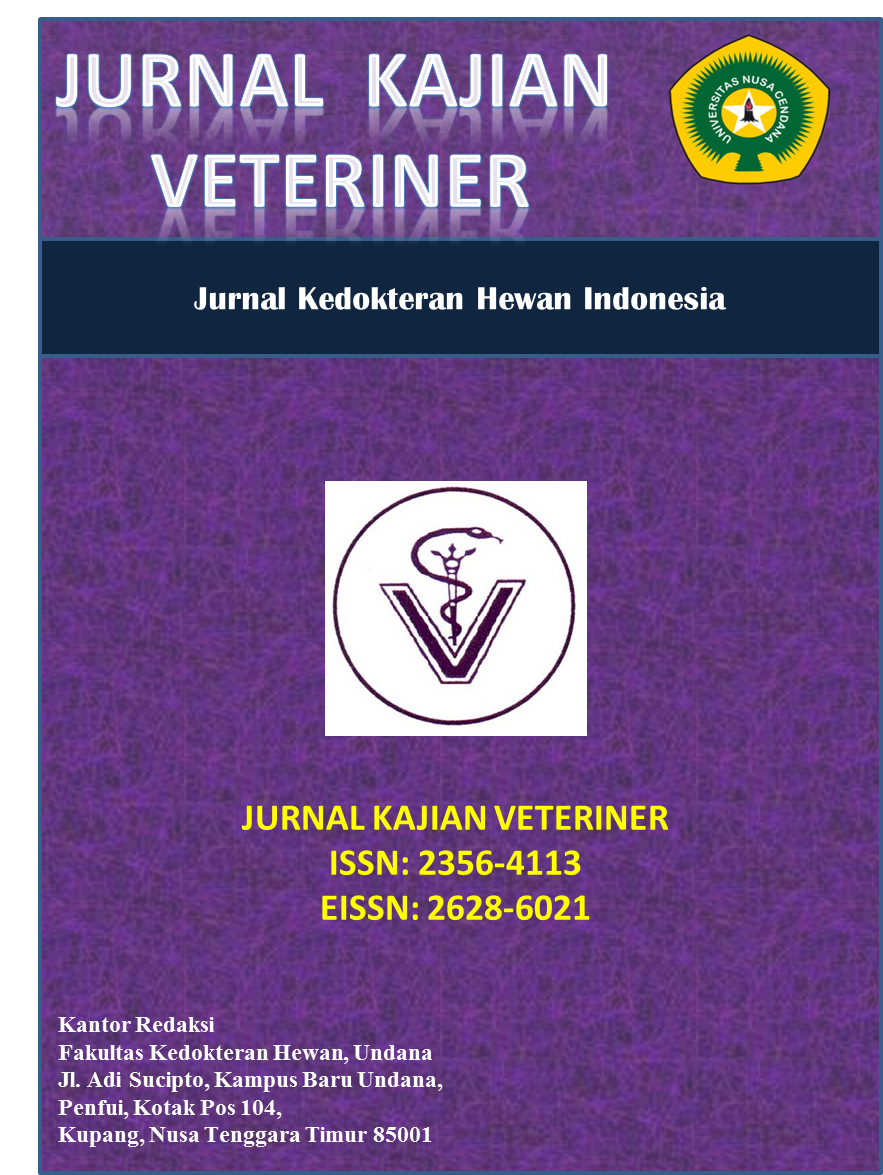Kajian Ekonomis Pakan Babi Cair Terfermentasi dalam Berbagai Level Biji Asam dan Sumber Protein Berbeda
Economical Study of Fermented Liquid Pig Feed in Different Levels of Tamarind Seeds and Different Protein Sources
Abstract
A study with the aim of assessing the economic value of fermented liquid pig feed in various levels of tamarind seeds and different protein sources has been carried out from July-August 2022. Liquid feed is formulated according to the needs of the grower phase of pigs. The treatments, Feed A : soybean meal (SM) and Whole tamarind seed (WTS) 0, 10, 20, 30%; Feed B: Meat and bone meal (MBM) and WTS 0, 10, 20, 30%; Feed C: SM and MBM and WTS 0.10,20,30%; Feed D: Fish meal and WTS 0, 10, 20, 30%. The research variables were the price of feed per kg and the total feed costs incurred in rearing grower pigs from weaning until 5 months of rearing reached a slaughter weight of 80 kg. This research is a qualitative research based on the results of the calculation of 4 feed formulations. Data analysis was descriptively by calculating the difference and the percentage of feed costs incurred. The results showed that the decrease in the price of feed per kg and the total cost of feed incurred to reach the slaughter weight of pigs was caused by the use of tamarind seeds which increased up to 30% as well as the price, quality, and type of protein source feed ingredients are used. The conclusion is the use of tamarind seeds in feed with different levels and different protein sources can reduce the price of feed per kg and the cost of feed required to reach slaughter weight.
Downloads
References
Kojo RE., Panelewen VVJ., Manese MAV., dan Santa N., 2014. Efisiensi Penggunaan Input Pakan Dan Keuntungan Pada Usaha Ternak Babi Di Kecamatan Tareran Kabupaten Minahasa Selatan. Jurnal Zootek. 34 (1): Pp:62-74.
Sihombing DTH., 2006. Ilmu Ternak Babi. Cetakan Kedua. Gadjah Mada University Press. Yogyakarta.
Sinulingga YP., Santa NM., Kalangi MS., dan Manese MAV., 2020. Analisis Pendapatan Usaha Ternak Babi Di Kecamatan Tombulu Kabupaten Minahasa. Jurnal Zootec. 41 (2): Pp:471-481
Standar Nasional Indonesia (SNI)., 2016. Standar Nasional Indonesia Pakan Ternak Babi Fase Grower.
Wea R., 2019. Pemanfaatan Biji Asam Terfermentasi Dalam Rangka Meningkatkan Kinerja Produksi Dan Kualitas Daging Babi Persilangan. Disertasi Pasca Sarjana Universitas Nusa Cendana Kupang.
Wea R., Ch. A. Morelaka, dan Koten B. B., 2021. Kandungan energi bruto, energi tercerna, dn energi metabolis pakan cair fermetasi berbahan biji asam utuh pada babi grower. Jurnal ilmu peternakan dan veteriner tropis. 11 (2) : 133-137.
Wea R., Balle-Therik J. F., Kalle P. R., and Mullik M.L., 2018. Evaluation of Dry matter, organic matter, and energy content of tamarind seed affected by soaking and fermention. Journal of Life Sciences, 12 (1): 24-29.
Wea R., Ninu AY., Koten BB., 2021. Harga dan estimasi nilai ekonomis pakan cair yang mengandung persentase biji asam berbeda. Jurnal Kajian Veteriner. 9 (3): Pp:135-141.
Wea R., Wirawan IGKO., and Koten BB., 2017. Evaluation of Nutrient Digestion of Tamarind Seeds Spontaneous Bioconversion in Local Timor Pigs. Journal of Life Sciences, 11 (5): 228-231.
Copyright (c) 2022 JURNAL KAJIAN VETERINER

This work is licensed under a Creative Commons Attribution-NonCommercial-NoDerivatives 4.0 International License.

 Redempta Wea(1*)
Redempta Wea(1*)








.png)


